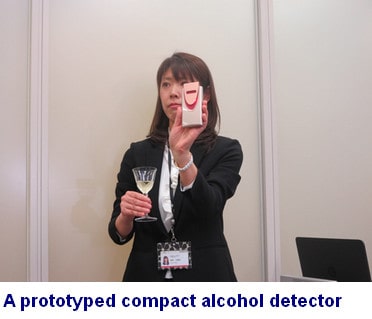Japan"s Ministry of Land, Infrastructure, Transport and Tourism (MLIT) and National Agency for Automotive Safety & Victims" Aid (NASVA) announced the results of the "Automotive Assessment (for fiscal 2014)," which compares the safety performances of commercially-available cars, May 8, 2015.
In the "collision safety evaluation," which evaluates safety against accidents, 10 of the 13 vehicles tested were given the top rating of "five stars."
In the collision safety evaluation, the safety of each vehicle type is evaluated based on the actual data (e.g. the results of collision tests using actual vehicles and advanced safety technologies). According to MLIT, the average score on the evaluation is showing an increasing trend. In fiscal 2014, a new record of 182.5 points was marked, and 71.4% of the vehicles tested were given five stars.
"It indicates that vehicle safety is improving overall," MLIT said.
The 10 five-star vehicles are Toyota Motor Corp"s "Voxy/Noah/Esquire" and "Harrier," Nissan Motor Co Ltd"s "Teana," Fuji Heavy Industries (FHI) Ltd"s (Subaru) "Forester," "Levorg/WRX" and "Legacy," Honda Motor Co Ltd"s "Vezel" and "Grace" and Mazda Motor Corp"s "Mazda3" and "Demio."
Of the ten vehicles, FHI"s Legacy was given the highest score (188.8/208). Also, Nissan"s Teana and Honda"s Grace received a perfect score in the "test of neck protection performance at the time of a rear-end collision," which evaluates the amount of load applied to the neck by a vehicle behind, for the first time in the history of the Automotive Assessment.
In addition to the collision safety evaluation, the Automotive Assessment includes the "preventive safety performance assessment," which evaluates advanced safety technologies that prevent accidents from occurring, and "child seat assessment."
"It is necessary to have assessments designed for the traffic conditions in Japan," the Committee for Evaluation and Review for the Automotive Assessment said. "The number of traffic deaths was 4,113 in 2014, but two-thirds of them are pedestrians and drivers of two-wheeled vehicles. In view of reducing the number of casualties, preventive safety assessments, which reduce the number of accidents, are important."
The committee will add the evaluation of "device to provide rear-view information," which displays a rear view on an automotive monitor," to the preventive safety performance assessment in fiscal 2015.
The following are the 10 five-star vehicles.










 e NMR10," will be used at the time of taking a nap in a train, office, etc. They are targeted at those who cannot notice alarms from a smartphone or do not want others to notice alarms. They can also be connected to a smartphone as normal earphones to listen to music.
e NMR10," will be used at the time of taking a nap in a train, office, etc. They are targeted at those who cannot notice alarms from a smartphone or do not want others to notice alarms. They can also be connected to a smartphone as normal earphones to listen to music.















 future car.
future car.











 "s suggested retail price is ¥35,000 (excluding tax).
"s suggested retail price is ¥35,000 (excluding tax).





















